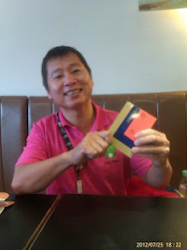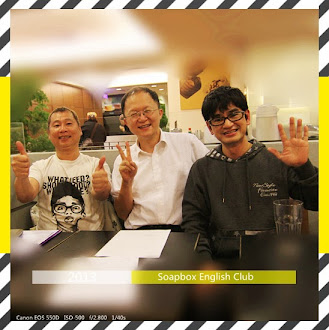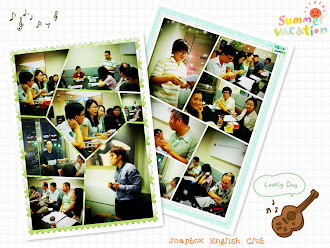埔捷運站1號出口 旁邊7-11巷子進入20公尺 看到夏朵美髮左轉 PM 7:00-9:30

交友心理學
Ways To Use Psychology To Get More Friends psychologium
Having close friends can sharpen your mind, help develop your social skills, encourage you to get to know and understand yourself better, inspire you to reach your goals, further your career, lead to potential new friends or romantic interests and even help you live a longer life.
Psychology today suggests a few obvious yet helpful tips that will allow you to broaden your horizons and hopefully make a new friend in the process.
Simply Turn Up
Have you ever heard the phrase ‘Eighty percent of success is showing up’? Woody Allen’s quote can be applied to many things, including friendship.
When presented with an opportunity to attend a social event, take it. It’s that simple. Make the effort to interact socially and you’ll be able to make the most of the exposure. You’ll meet new people and get to know your acquaintances better.
Plus, the more you go out and attend social gatherings, the more likely you are to develop friendships and associations with the same people you see at them regularly.
Join or form a Social Group
No matter what your main interest in life is, chances are there are people out there who share it. A quick flick through a local magazine or an online search will show you any groups that meet in your area relating to your favorite topic. Once you’ve found one, there’s nothing to stop you joining in. You’ll meet like-minded people who will be all too happy to discuss your passions with you. If there are no groups in your area, why not start one? You never know, there could be others just like you, waiting for the opportunity to meet people with similar interests.
Take Names into Account
Using someone’s name in a conversation can give them feelings of validation regarding their identity, subsequently allowing them to view you in a positive light for making them feel that way.
Once you’ve learned the person’s name, try using it from time to time and see how they respond.
Keep an Eye on their Feet
Following on to the psychological approach, Psychology Today also recommends looking at people’s feet in order to make friends. Sound strange? Don’t be so sure – the psychology behind it is sound!
To put things fairly simply, looking at peoples’ feet in a crowded room may in fact indicate who is willing to accept a new member into their group and who would prefer to be left alone.
If members of a larger group are formed in a semi-circle arrangement with their feet pointing outwards, this may be a clear indication they are welcoming to newcomers.
However, if the group are facing each other with their backs to others in the room and their feet pointing inwards, it is very possible they’re hoping to keep their conversations private for the mean time. It’s surprisingly clear to see how psychology can affect our opportunities for friendship, showing just how complex the process can be. Use this to your advantage by researching social psychology and ensuring you remember as many tips and trick as you can in order to build up rapports with your desired peers and social groups.
浪費時間的方法
Ways to Waste Time -- and How to Get It BACK! huffingtonpost.com
1. Learn something useless. Funny thing about triskaidekaphobia. There are so many reasons why people have taken a dislike to this number. It goes back to Hammurabi’s Code (or maybe not, as it was a clerical error), the Vikings, early Christians, the arrest of Jacques Du Molay and the Knights Templar, Apollo 13, Jason Voorhees (however, to be fair, his mother was the killer in the first “Friday the 13th”). See all this? This is all pretty much information you will never need to know, unless you wind up on Jeopardy.
Instead, learn something meaningful to you. Learn things that are important in your daily life, or enhance your hobbies. For instance, if you’re a good cook, read and try a new recipe. If you like a weekend drive, check for exciting or interesting events going on in the area.
2. Spend countless hours on YouTube. The average length of a YouTube video these days is about three minutes. Combine that with the fact that after you watch one video, YouTube happily informs you of scores of others you might like too, and suddenly you could be staring at the screen all day.
Instead, limit the number of videos you watch. Set a time limit and stick to it. Videos with hundreds of thousands, or millions of views aren’t going anywhere, and you can actually choose the option to “Watch Later,” and bookmark the ones that appeal to you. Also, if you use Google Chrome, Safari, or Opera as your browser, you have YouTube options available under Appearances, and you can select “Hide video suggestions.” Now you won’t be asked if you’d like to watch something else!
3. Never turn off the TV. Sure, it can be a friend, companion, or secret lover, and there’s a lot of channels to sift through, but again think about your time. A movie on TV will usually last around two hours, while a series episode goes on for 22 to 44 minutes. Even with energy-efficient HDTV models these days, it seems pointless to leave it incessantly blaring if you’re not around.
Instead, make your own personal TV guide. The internet can help you find out what’s going to be on for several days in advance. Look up the shows and movies for the week you absolutely can’t miss, then keep the schedule close to your TV. This is a great way to limit your TV viewing, watch what you really want, and get on with the rest of your life.
4. Read all the junk emails in your inbox. Honestly, how many daily emails do you get that promise you the sun, the moon, the stars, the golden apples of the west, and the perfectly sized... um... cucumber? A corollary to this is to read all the junk in your snail mail too.
Instead, clear away the junk. Your email software should have a spam filter or junk folder. Check to see what is available, and use them. Empty your trash folder daily also, so you don’t get tempted to read anything you tossed out. Tell your postal carrier to put you on a no-junk mail list — unless you’re like me and use them to pick up spills or the cats’ little accidents. It saves on paper towels and they can be very durable
5. Stand in line and wait. It’s tough not to. A recent article claimed Americans spend about 37 billion hours a year standing in line for something. What better way to spend quality time than standing there, grumbling, and complaining until everyone else in line wants to hit you, or be so obnoxious that you embarrass yourself, your companions, and anyone in the vicinity?
Instead, make the best of time. I’ve gotten into the habit of keeping a paperback I really love inside my purse. My smartphone has video player capabilities, so I can watch Netflix or something. If lines are really long at checkout aisles, especially at grocery or department stores, I’ve actually gotten out of line and re-shopped for about five or ten minutes, and when I returned, the lines were gone or much shorter. It’s impossible not to wait for things. All I’m saying is, it’s not impossible to still get some other things done while you wait.











